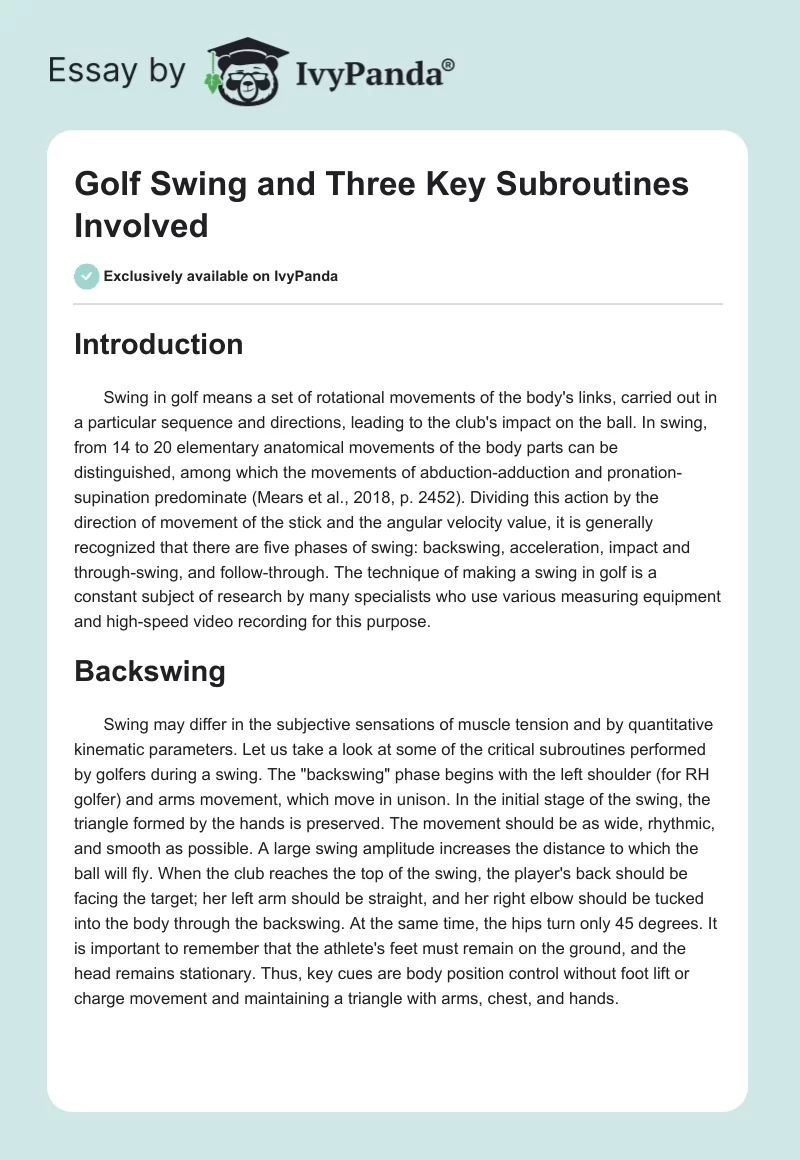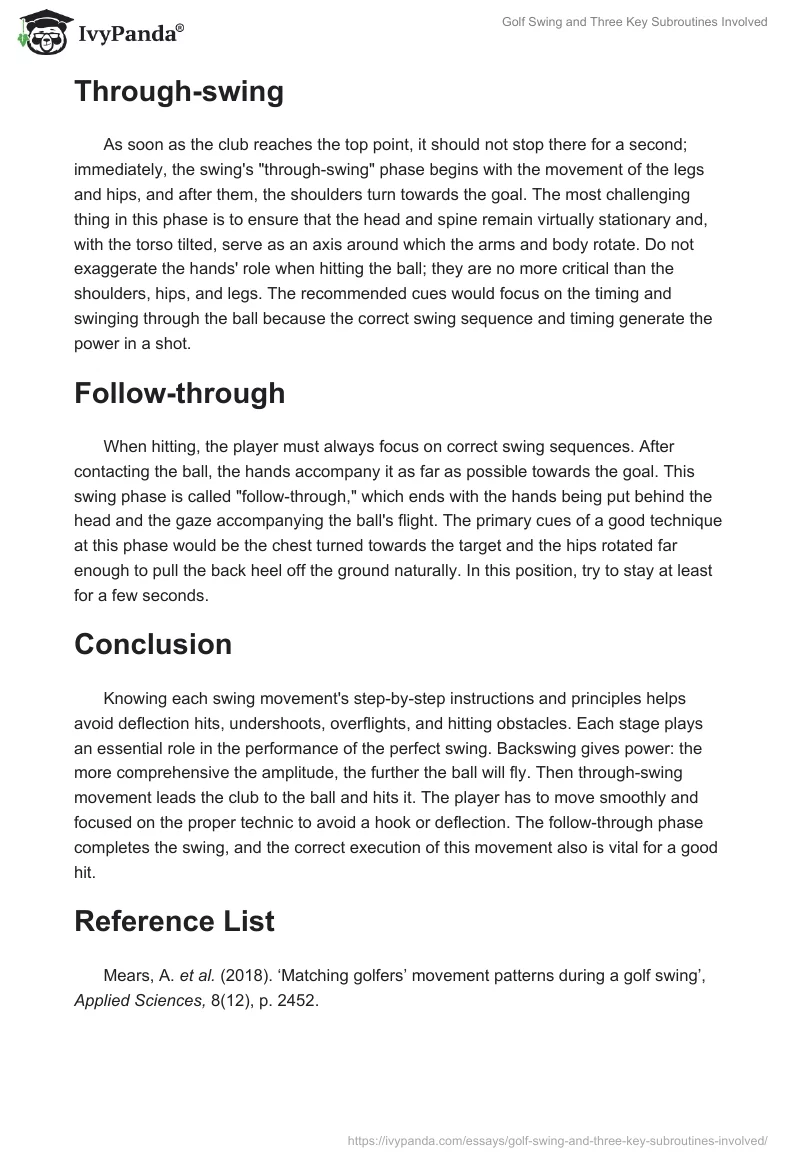Introduction
Swing in golf means a set of rotational movements of the body’s links, carried out in a particular sequence and directions, leading to the club’s impact on the ball. In swing, from 14 to 20 elementary anatomical movements of the body parts can be distinguished, among which the movements of abduction-adduction and pronation-supination predominate (Mears et al., 2018, p. 2452). Dividing this action by the direction of movement of the stick and the angular velocity value, it is generally recognized that there are five phases of swing: backswing, acceleration, impact and through-swing, and follow-through. The technique of making a swing in golf is a constant subject of research by many specialists who use various measuring equipment and high-speed video recording for this purpose.
Backswing
Swing may differ in the subjective sensations of muscle tension and by quantitative kinematic parameters. Let us take a look at some of the critical subroutines performed by golfers during a swing. The “backswing” phase begins with the left shoulder (for RH golfer) and arms movement, which move in unison. In the initial stage of the swing, the triangle formed by the hands is preserved. The movement should be as wide, rhythmic, and smooth as possible. A large swing amplitude increases the distance to which the ball will fly. When the club reaches the top of the swing, the player’s back should be facing the target; her left arm should be straight, and her right elbow should be tucked into the body through the backswing. At the same time, the hips turn only 45 degrees. It is important to remember that the athlete’s feet must remain on the ground, and the head remains stationary. Thus, key cues are body position control without foot lift or charge movement and maintaining a triangle with arms, chest, and hands.
Through-swing
As soon as the club reaches the top point, it should not stop there for a second; immediately, the swing’s “through-swing” phase begins with the movement of the legs and hips, and after them, the shoulders turn towards the goal. The most challenging thing in this phase is to ensure that the head and spine remain virtually stationary and, with the torso tilted, serve as an axis around which the arms and body rotate. Do not exaggerate the hands’ role when hitting the ball; they are no more critical than the shoulders, hips, and legs. The recommended cues would focus on the timing and swinging through the ball because the correct swing sequence and timing generate the power in a shot.
Follow-through
When hitting, the player must always focus on correct swing sequences. After contacting the ball, the hands accompany it as far as possible towards the goal. This swing phase is called “follow-through,” which ends with the hands being put behind the head and the gaze accompanying the ball’s flight. The primary cues of a good technique at this phase would be the chest turned towards the target and the hips rotated far enough to pull the back heel off the ground naturally. In this position, try to stay at least for a few seconds.
Conclusion
Knowing each swing movement’s step-by-step instructions and principles helps avoid deflection hits, undershoots, overflights, and hitting obstacles. Each stage plays an essential role in the performance of the perfect swing. Backswing gives power: the more comprehensive the amplitude, the further the ball will fly. Then through-swing movement leads the club to the ball and hits it. The player has to move smoothly and focused on the proper technic to avoid a hook or deflection. The follow-through phase completes the swing, and the correct execution of this movement also is vital for a good hit.
Reference List
Mears, A. et al. (2018). ‘Matching golfers’ movement patterns during a golf swing’, Applied Sciences, 8(12), p. 2452.

 4.50
4.50
